This was published 1 year ago
How 10 of the world's most amazing shipwrecks ended up where they are
By David Whitley
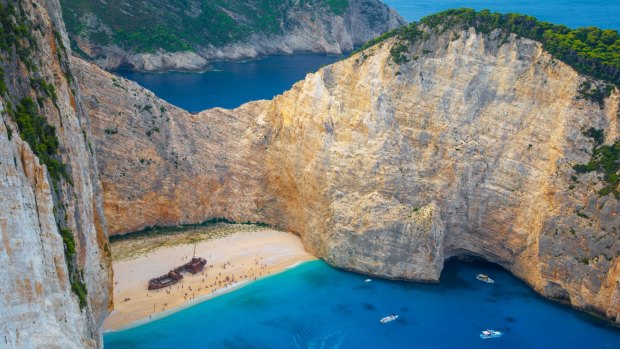
The MV Panagiotis isn't the most impressive ship in the world, but it is in a stunning location: Navagio Beach on Greek island of Zakynthos.Credit: iStock
Whether delighting divers or looming over beaches, some of the world's shipwrecks have had a new life in death. Several stricken ocean-going giants have become tourist attractions – and these are 10 of the best you can dive, snorkel, swim or even walk around.
Titanic
Where? Off the coast of Canada
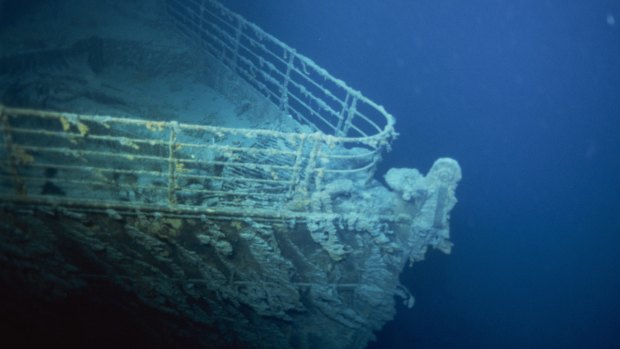
Credit: Getty Images
The world's most infamous shipwreck lies well off the Atlantic Coast of Canada. The iceberg-striking transatlantic liner was finally discovered in 1985 and all attempts to raise it have been thwarted. It is possible to dive on the Titanic, but it is neither easy nor cheap. The wreck is at a depth of 3800 metres – you need serious diving experience. And the tours run by Ocean Gate Expeditions cost a cool $US250,000 ($A380,000) per person.
MV E Evangelia
Where? Costinești, Romania
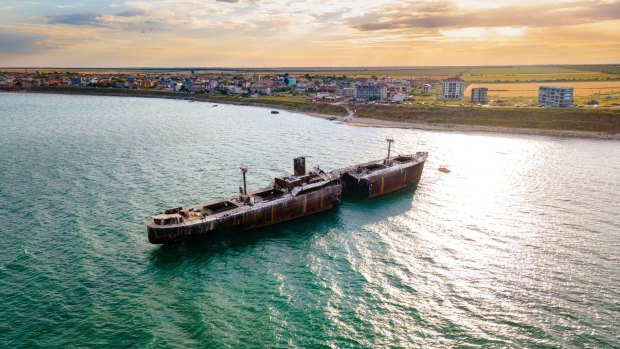
Credit: Alamy
Built by the same shipyard as the Titanic, the E Evangelia ran aground in the Black Sea in 1968. What makes this 131 metre cargo ship so unusual, however, is how close to the shore it is. The wreck is largely intact, and lies just off the beach in the small seaside resort of Costinești. It essentially stands there, posing for photographs, while locals occasionally venture out to daub it with graffiti.
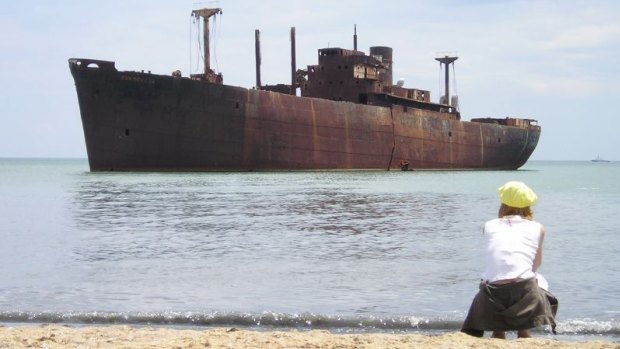
Credit: Wikimedia Commons
Rainbow Warrior
Where? Matauri Bay, New Zealand
In 1985, France indulged in a spot of state-sponsored terrorism when it bombed Greenpeace's flagship vessel in Auckland. After the international scandal had died down, the New Zealand government decided to put the Rainbow Warrior to good use. It was moved to Matauri Bay in Northland, then scuttled to become a fish sanctuary. It's now an understandably popular wreck dive.
SS Thistlegorm
Where? Near Dahab, Egypt
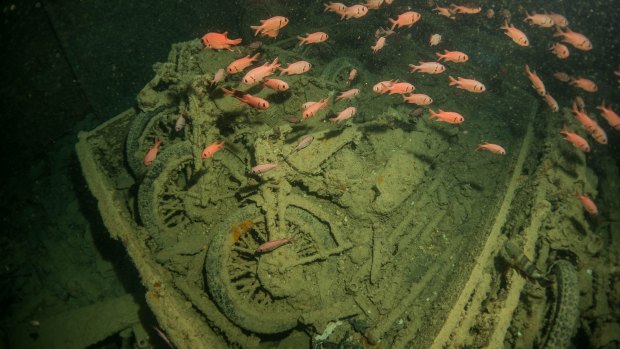
Credit: Getty Images
Sunk by German bombers during World War II, this British Navy transport ship lies in the Red Sea. What makes this wreck dive special is the sheer amount of stuff the Thistlegorm had on board when it sank. You're not just diving around a ship – you're diving around trucks, motorbikes, Jeeps and trains as well.
USAT Liberty
Where? Bali, Indonesia
Another Second World War victim, the USAT Liberty initially came to rest on Tulamben Beach in Bali. However, the eruption of Mount Agung in 1963 pushed it out to sea, and now it mainly lies on a shallow sandy slope. This makes it an unusual wreck dive, as you don't actually need scuba gear to explore it – snorkellers can enjoy the experience of seeing aquatic life flit around a 120 metre-long ship, too.
Chuuk Lagoon
Where? Chuuk, Micronesia
It's not about one wreck in the Chuuk Lagoon – it's an entire sunken fleet. Chuuk was one of Japan's main naval bases during World War II. In 1944, the US launched Operation Hailstone, sinking dozens of ships in the lagoon and creating the world's greatest ship graveyard. Divers are spoilt for choice, with clear water and lack of ocean currents making for near-perfect diving conditions.
MV Panagiotis
Where? Zakynthos, Greece
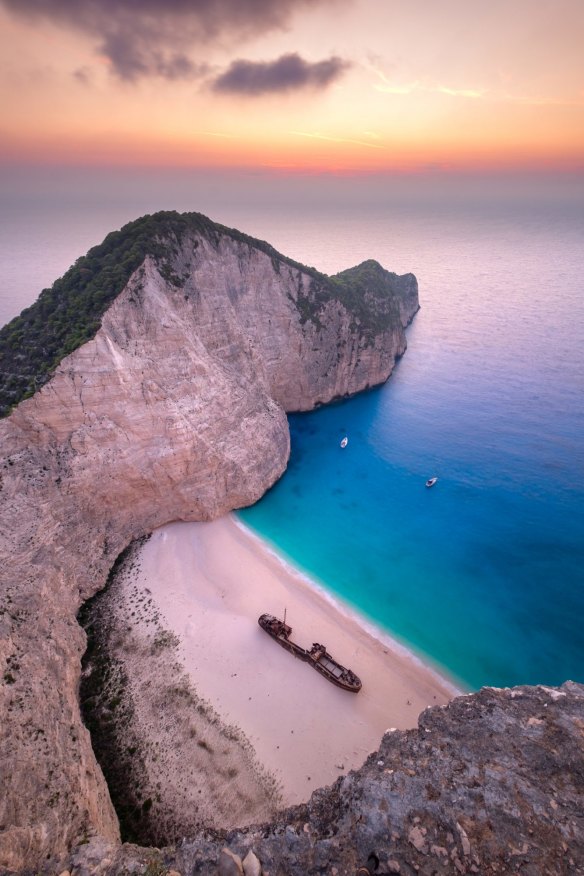
Credit: iStock
The MV Panagiotis isn't the most impressive ship in the world, but it is in a stunning location. Navagio Beach is an indisputable stunner, with high cliffs curving around the exposed cove. The only way in is by boat, but when you land, the stricken Panagiotis lies on the sand. It's almost as if it has been put there for photographs, although the legend behind it suggests it was involved in a smuggling operation when taken out by a storm.
Eduard Bohlen
Where? Skeleton Coast, Namibia
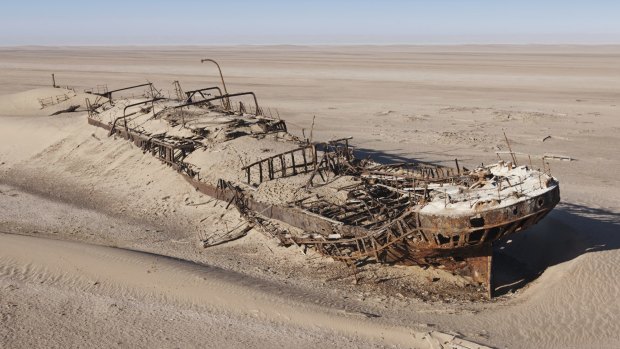
Credit: Getty Images
The Eduard Bohlen, a cargo ship that ran aground in 1909, looks like it has been transplanted to the middle of the desert. This bizarre shipwreck is more than 300 metres inland, and is slowly moving further from shore as the sand mass shifts west. Many wrecks become homes for fish, but the Eduard Bohlen has become a shelter for land animals such as jackals, trying to escape from the desert heat.
SS Great Britain
Where? Bristol, England
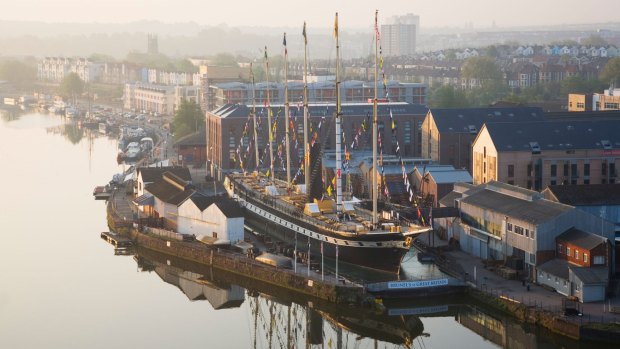
When it launched in 1843, the SS Great Britain was the largest ship in the world. The iron-built giant ushered in a new era of ocean passenger travel. But the story of how it got to Bristol is remarkable.
The SS Great Britain was scuttled off the coast of the Falkland Islands in 1937, but in 1970 a rich businessman paid for it to be sufficiently repaired so that it could be towed all the way back to the UK. It now stands proud in the dry docks of Bristol Harbour, and is a museum ship. See ssgreatbritain.org
MS World Discoverer
Where? Roderick Bay, Solomon Islands
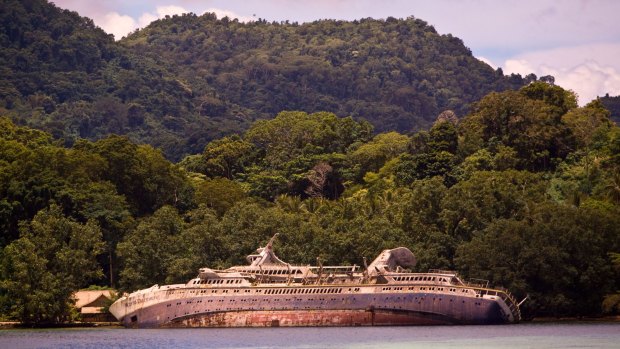
Credit: Alamy
This cruise ship struck an uncharted rock in the Nggela Islands in 2000, leading to a frantic rescue mission. In order to stop the ship sinking, the captain steered the World Discoverer into Roderick Bay and beached it.
Now it lies against the shore, listing at a 46 degree angle. Ironically, it has become a tourist attraction for other cruise ships.
The writer was a guest of Visit Bristol (visitbristol.co.uk)
See also: I see dead people: The world's 10 most horrifying tourist attractions
Sign up for the Traveller Deals newsletter
Get exclusive travel deals delivered straight to your inbox. Sign up now.